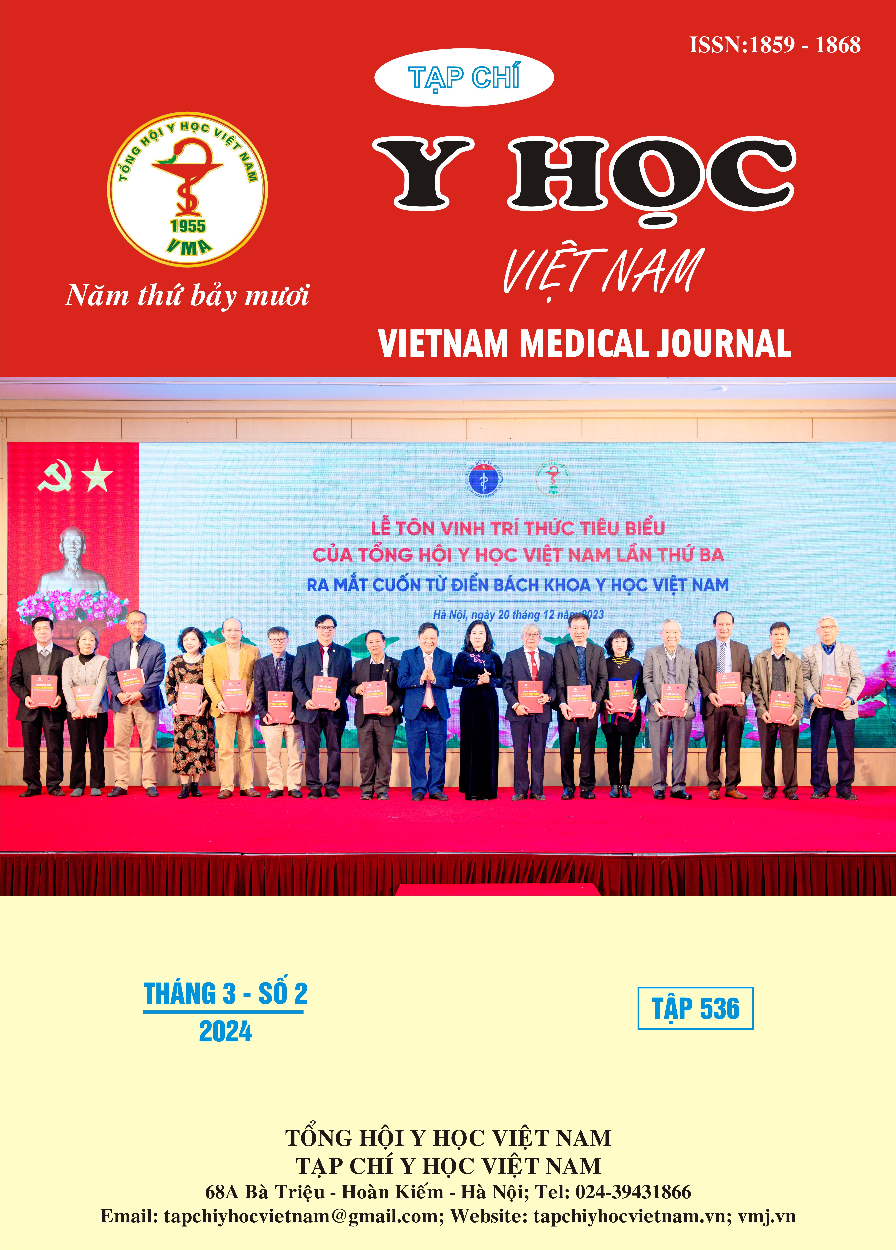EFFECTIVENESS AND SAFETY OF CORONARY ARTERY INTERVENTION THROUGH DISTAL RADIATE ARTERY PATH
Main Article Content
Abstract
Background: Percutaneous coronary intervention using the proximal radial artery is superior to the femoral artery. However, there are still limitations such as occlusion of the proximal radial artery, long compression bandage time, etc. Normal cannulation through the distal radial artery can overcome these limitations. Objective: Evaluate the effectiveness and safety of percutaneous coronary intervention using the right or left distal radial artery. Research subjects and methods: descriptive study with 24-hour monitoring on 259 patients scheduled for coronary angiography or intervention at the Department of Cardiology, Kien Giang General Hospital from January 2023 to May 2023. Results: 61.4% of patients had chronic coronary artery disease; 29.3% of non-ST-segment elevation acute coronary syndromes and 9.3% of ST-segment elevation myocardial infarctions in the study. 133/259 (51.4%) patients had percutaneous coronary intervention with a stent through the distal radial artery. The success rate of needle puncture of the distal radial artery and performing the procedure was 92.7%. The rate of needle insertion failure to translocate the proximal radial artery or femoral artery was 7.4%. The rate of complications of temporary loss of distal radial pulse was 2 cases (0.8%). However, after 24 hours of recovery, there were no cases of distal radial embolism diagnosed by vascular ultrasound. Hematoma at the needle puncture site (0.8%). It was recorded that 100% of cases were bandaged in place with manual gauze. Conclusion: Coronary angiography and intervention through the distal radial artery had a high success rate of 92.7% and had a low needle insertion failure rate. There was a low rate of vascular complications at the needle insertion site.
Article Details
References
2. Eid-Lidt Guering, Rivera Rodríguez Agustín, Jimenez Castellanos Joaquín, Farjat Pasos Julio I, Estrada López Kathia E, et al. (2021), "Distal radial artery approach to prevent radial artery occlusion trial". Cardiovascular Interventions, 14 (4), pp. 378-385.
3. Escutia-Cuevas Héctor Hugo, Alcántara-Meléndez Marco Antonio, Torres-Sánchez Jorge, Muratalla-González Roberto, Jiménez-Valverde Arnoldo Santos, et al. (2020), "Distal transradial access for coronary angiography and percutaneous coronary intervention: an observational study in a Latin-American center". Cardiovascular and Metabolic Science, 31 (1), pp. 9-16.
4. Feng Hao, Fang Zhenfei, Zhou Shenghua, Hu Xinqun (2019), "Left distal transradial approach for coronary intervention: insights from early clinical experience and future directions". Cardiology Research and Practice, 2019.
5. Nairoukh Zaid, Jahangir Saira, Adjepong Dennis, Malik Bilal Haider, Dennis Adjepong MBA (2020), "Distal radial artery access: the future of cardiovascular intervention". Cureus, 12 (3).
6. Roghani-Dehkordi Farshad, Hashemifard Omid, Sadeghi Masoumeh, Mansouri Rohollah, Akbarzadeh Mehdi, et al. (2018), "Distal accesses in the hand (two novel techniques) for percutaneous coronary angiography and intervention". ARYA atherosclerosis, 14 (2), pp. 95.
7. Valgimigli Marco, Landi Antonio, Distal transradial access for coronary procedures: old certainties, novel challenges, and future horizons, 2022, American College of Cardiology Foundation Washington DC. pp. 33-38.
8. Valgimigli Marco, Gagnor Andrea, Calabró Paolo, Frigoli Enrico, Leonardi Sergio, et al. (2015), "Radial versus femoral access in patients with acute coronary syndromes undergoing invasive management: a randomised multicentre trial". The Lancet, 385 (9986), pp. 2465-2476.
9. Vefalı Veli, Sarıçam Ersin (2020), "The comparison of traditional radial access and novel distal radial access for cardiac catheterization". Cardiovascular Revascularization Medicine, 21 (4), pp. 496-500.


